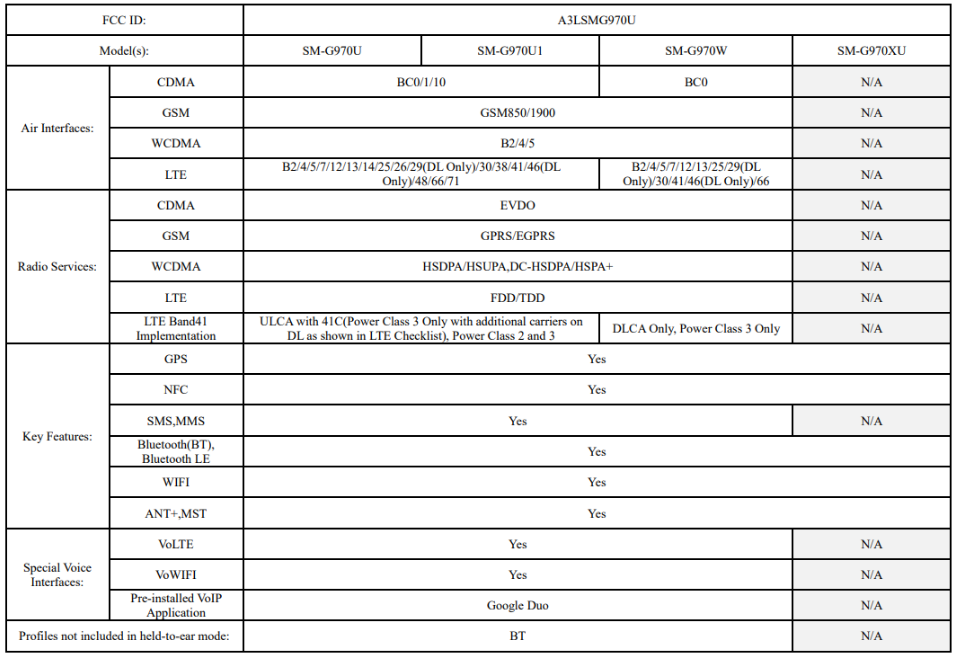Last week Samsung S10 series leaked online and revealed Price, Storage Variants and Color Options Details. Today the same Galaxy S10-series smartphones from Samsung appears at FCC certification which indicates the company is indeed getting ready to announce a new series smartphones. The company is expected to launch at least five models – the Galaxy S10 E, the Galaxy S10, the Galaxy S10+, a 5G variant, and a foldable smartphone.

The next-in-line flagships from Samsung, the Galaxy S10 series is slated for a February 20 unveiling amidst high hopes from fans. The smartphones have now cleared the FCC certification signaling that it is fit for the use in the buyer’s hands. Besides, the FCC documents don’t spill the beans much.
The certification (courtesy GizChina) reveals that the Galaxy S10 will have the same connectivity options as the previous Galaxy S9 model. These include LTE bands, VoLTE, VoWiFi, GPS, Bluetooth 5 and MST (for Samsung Pay). However, the FCC listing also shows that the smartphone will support Wi-Fi 6 (802.11ax), which is the newest protocol that supports faster speeds and better range. Qualcomm’s next-generation WiFi chips, which may be found in the Snapdragon 855 mobile platform, are likely to be included in numerous 2019 flagship devices.

The certification doesn’t reveal much about the device, but the certification is the confirmation that the phone is consumer ready and fit to be launched. Furthermore, the FCC document has also revealed that the smartphones will have a unique “Wireless Power Transfer” feature which will support “receiv[ing] or transmit[ting] an AC power signal through magnetic induction (MI) or magnetic resonance (MR).” Basically, this feature is same as the reverse charging feature that we’ve seen in Huawei’s flagship Huawei Mate 20 Pro.
